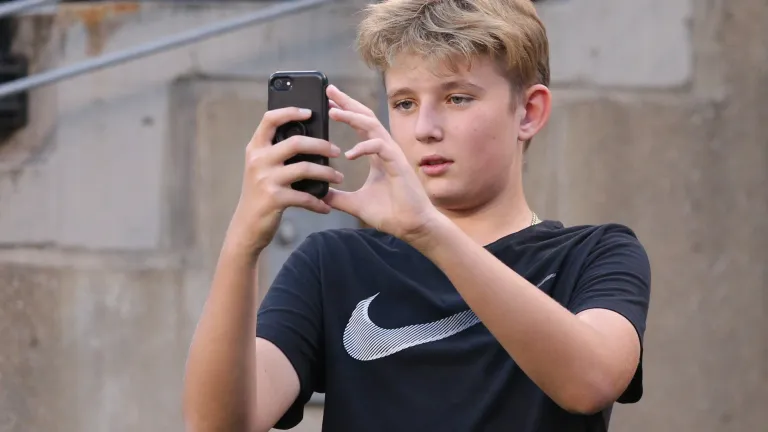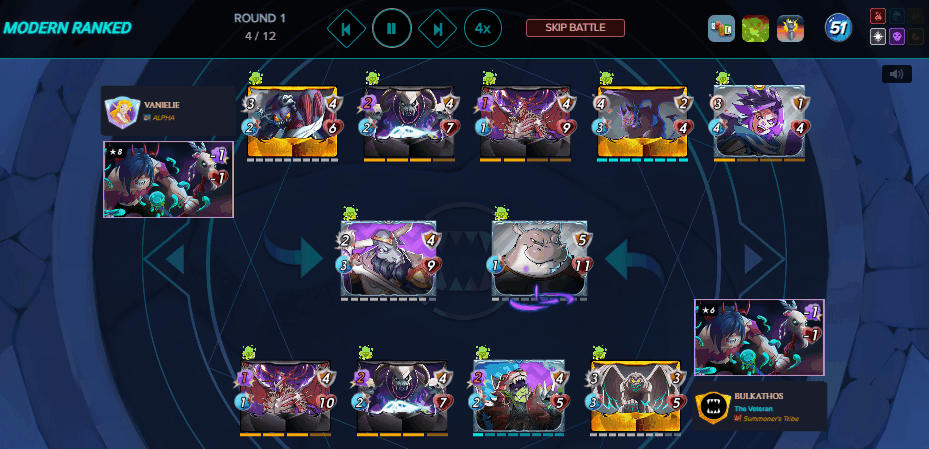Staking the tokens you earn by posting will elevate your vote value. The more stake you have the higher the value of your vote will be. If you are actively voting content you can have an APR anywhere between 4-16%
So if I get you correctly , you are saying via posting I can earn enough tokens that I can use as a stake ? So what type of posts can I make to attract such earnings??
Staking Leo gives you power to upvote and add back some staked LEO tokens from the daily pool. You can even delegate to leo.voter and receive the rewards.
You can buy LEO from any Hive market look for another comment pls.
I found a very good use case for ChatGPT and that's asking it how to do stuff in programs lol. No more long 8 minute videos or videos that don't really show me what to do. A simple prompt gives me step by step instruction. LIFECHANGING!
yea the o1 is leaps ahead of the older versions when it comes to collaborating with it for code & software. Its like having a paid instructor sitting over your shoulder
I got a little confused, when putting the splinterlands theme, the rewards for the posts and threads will be in SPS, that is, will we receive the SPS token?? Or is it just for a form of viewing?
If you are on the Splinterlands theme, a new module is added to your Dashboard to "Cashout Earnings" which will convert your liquid LEO, HIVE & HBD to $SPS autonomously using @leodex
Knowing this may have been my last workout for the forseable future I gave whatever I had remaining as my foot pain was at it's limit. Thankfully, it was good news bad news. The good news is that I'm NOT going to do any Orangetheory Fitness Workouts or Running events for ONLY two weeks. That bad news was that I'm dealing with an official prognosis of plantar fasciatis from a bone spur and of course an inflamed ligament.
This looks worse than what it is. I won't have to walk around in the splint boot. It's for using it at home 1 1/2 hours a day. I can break them up into 30 minutes but I'm probably going to try sleeping with it and see how it goes.
Thanks brother. I'm just happy that I didn't need any crutches, surgery, etc. I can still do some walking to keep active and I have some dumbbells at home to put to use but it will be a long two weeks.
I thought on the INLEO front end they are supposed to show up as our account. That’s how it was before. I know there is the container account that shows up on other front ends
I think there was a UI problem due to the integration (maybe wrong) which cause the values of curations to be over bloated, so I think it's now showing accurate figures.
Yep not for everyone! I was against adding LEO as a payment option for a while, though I think we've got everything to a place where it makes economic sense now
My IGN is saydie. Thank you!@infidel1258 SIGN ME UP FOR THE INLEO SHOWDOWN!
#splinterlands #play2earn #spt #inleo
Great news for the #splinterlands fandom, now #inleo will be a tournament sponsor! We start the year with good expectations. #newlion #crypto #cent #leofinance
#leofinance
What interesting news, I'm looking forward to participating!
Hhmm still trying to find my way around here but here looks great to me already , my name is cole and I just want to be a valuable #newlion
Welcome Cole.. 😍
Welcome to InLeo!!
Nice to have you here!
Welcome Cole!
Welcome Cole, this is the place to be! And $LEO is at a bargain price right now, so try to profit from that!
We didn't start the fire
Havent been that cold yet, but my gf like the extra heat in the morning so we do it anyways 🦁🔥
Must be sub zero!
As a #newlion or what you guys call it , how profitable is it staking on leo and how can I get it .
My name is Marie and I want to explore.
Staking the tokens you earn by posting will elevate your vote value. The more stake you have the higher the value of your vote will be. If you are actively voting content you can have an APR anywhere between 4-16%
Thanks for the response .
So if I get you correctly , you are saying via posting I can earn enough tokens that I can use as a stake ? So what type of posts can I make to attract such earnings??
Staking Leo gives you power to upvote and add back some staked LEO tokens from the daily pool. You can even delegate to leo.voter and receive the rewards.
You can buy LEO from any Hive market look for another comment pls.
https://beeswap.dcity.io/ is a popular trading platform for Hive based tokens. You need Hive Keychain extension to sign in.
headed back to work. Didn’t get it all done today. Luckily I can work from home and don’t have to go back to the office.
Enjoy the rest of your day
Pepito is relaxing on the sofa as I watch The Office
"Leave me alone" face lol
So cute , I love dogs 🔥
🔥 $DASH is the Coin of the Week! 🔥 by ExchangIo (1👇)
⭐️ This week, $BTC / $DASH is our default trading pair
⭐️ Cross-chain swaps with #DigitalCash on Exchangio ⭐️ Exchange 750+ different assets with #DASH 🎂 Celebrate @dashpay 's birthday with them! 🎂 (2👇)
#crypto #exchange
$DASH is most definitely a great coin !BBH 👌
Some games before going to sleep #nft #game #splinterlands
Shoreline Tranquility:
 #natureonleo #photography
#natureonleo #photography
Playing Splinterlands is really interesting! #cent #splinterlands 🚀
I want to learn about Splinterlands many more!
@infidel1258
SIGN ME UP FOR THE INLEO SHOWDOWN!
ign: Jagged71
https://inleo.io/threads/view/dashpay/re-akqywffjnl
working on something
Hi, @simplegame,
This post has been voted on by @darkcloaks because you are an active member of the Darkcloaks gaming community.
Get started with Darkcloaks today, and follow us on Inleo for the latest updates.
Nice setup! I see you have a Razer mouse. I love Razer. :D
yeah they make the best mice
Your cable managment gives me anxiety :D Love the vertical screen for Discord though.
thanks. Sorry for the anxiety
I need to plug a vertical discord screen too... and I just realized my older one freed one extra monitor.
Thanks for the reminder. 😅
anytime
That's a cool set up. Wish to own
sweet set man
Time to feed LeoAI some more!
We need to grow our database.
If you have access to @mightpossibly summarize tool, feel to jump in!
#threadcast #leoai #cent
!summarize #inleo #leodex
!summarize #hamas #hostage
!summarize #sidehustle #2025
!summarize #kids
!summarize #business #indoor #playground
!summarize #cycling #youtube #income
!summarize #quit #job
!summarize #mortage
!summarize
!summarize #youtube #guru #lies
!summarize #income #coach
!summarize #morning #routine
!summarize #trump #melania #crypto
!summarize #wagner #rebellion
!summarize #ultra #running
!summarize #ai #youtube
!summarize
!summarize #promotion
!summarize #car #living #honda
!summarize #trump #memecoin
!summarize #african #population
!summarize #shorts
!summarize #grow #youtube
!summarize #live #car
!summarize #kickass
!summarize #documentary #canva
!summarize #running #5k
!summarize
!summarize #slow #living
!summarize #tiktok #ban
!summarize #youtube #income
!summarize #mindset
!summarize #cycling #england #india
!summarize #dexter
!summarize #productivity
https://www.youtube.com/live/MKk_QhZ0ros?si=gv2kdSO48ylJjQQx !summarize #pcos
!summarize #lifestory
!summarize
!summarize #turo
!summarize #age #of #empire #mobile
!summarize #farming
!summarize #goggins #challenge
!summarize #faceless #instagram
!summarize #exercise
!summarize #cherniv #ukraine #war
!summarize #trump
!summarize
!summarize #elon #musk
Lol what a scammer
!summarize #us #debt
!summarize #turo
!summarize #fatloss #weightloss
!summarize #running
!summarize #habits
!summarize #subway
!summarize #trump
!summarize #disney #adult #dating
!summarize #youtube #ai
!summarize #single
!summarize
!summarize #youtube #income
!summarize #ireland
!summarize #trailer
!summarize #trump
!summarize #tiny #house #finance
!summarize #youtube #monetization
!summarize #men #health
!summarize #denmark #salary
!summarize #ethereum
!summarize #canada #china
!summarize #grow #youtube
!summarize #grant #cardone
!summarize #baltic #invasion #russia
!summarize #minimalism
!summarize #renovation
!summarize #youtube #growth
!summarize #hormozi
!summarize #trump #border #control
!summarize #lower #blood #sugar
!summarize #finance #tips
!summarize #running
!summarize #make #money
!summarize
!summarize #stock #market
!summarize
!summarize #tiktok
!summarize #finance
!summarize #population #collapse #southkorea
!summarize
!summarize #female #hormones
!summarize #inheirtance
!summarize #fatloss
!summarize #declutter
!summarize #charisma
!summarize #debt
!summarize #content #creation
!summarize #us #debt
!summarize #russia #ukraine #war
!summarize #iran
!summarize #marvel
!summarize #facebook
!summarize #business #2025
!summarize #youtube #niche
!summarize #youtube #ai
!summarize #snapchat #story
!summarize #make #money #website
!summarize
!summarize
!summarize
!summarize
!summarize
!summarize
!summarize
!summarize
!summarize
!summarize
!summarize #sidehustle
!summarize
!summarize
!summarize
!summarize
!summarize
!summarize
!summarize
!summarize
!summarize
!summarize
!summarize
!summarize
Lets go over 1k today 🦁🦁
!summarize #training
!summarize
!summarize
!summarize
!summarize
!summarize
!summarize #tiktok #ban #trump
!summarize #crypto #rug
!summarize #fitness #challenge
!summarize #youtube #stocism
!summarize #mrbeast
!summarize #homeless
!summarize #trump #crypto #rug
!summarize #pcos
!summarize
!summarize
!summarize #trump #nati
!summarize
!summarize
!summarize
!summarize #bulking
!summarize #jobs #ai
!summarize
!summarize #frugal #living
!summarize #russia #ukraine #war
!summarize #canva #ai #sidehustle
!summarize #trump #cartels #Mexico
!summarize #filmbooth
!summarize #wojak #trumpcoin
!summarize
!summarize #youtube #income
!summarize #comedy #mars
!summarize
!summarize
!summarize
!summarize
!summarize
!summarize #solar #panel
!summarize
#steven #segal
!summarize
!summarize
!summarize #russia #putin
!summarize #openai #ai
!summarize #roman #empire
!summarize
!summarize
!summarize
!summarize #football #highlights #youtube
!summarize #shorts
!summarize
!summarize
INLEO x Splinterlands, now LIVE on INLEO!

I really liked this collab, would like to see more SPL tournaments from inleo! 🦁
I have really been missing a lot. Need to catch up
We're developing faster than ever
I can see that and I love it.
Esto se pondra mucho mejor.
🦁
🚀
Will there be a different kind of sign up for that. Splinterlands is already Hive based so maybe there's no need.
Nope! All of the existing ones can be used for the Splinterlands integration
Just switch your theme and enter a world of Splinterlands on INLEO 🦁
That's pretty cool news! Haters gonna blow a gasket!
#in #freakin #sane
Now up to 1500 $HIVE Power delegated to @leo.voter !
I say let's freaking go #inleo 🚀
That's great. I'll be there one day. Congratulations!
that is amazing
I did about $75k in used media sales in 2024. I feel like it's time for an update blog post. Last update I had just crossed $25k in a year
Wow well done man!
And you still do have a regular 9-5 job right?
Yep for the time being
Hi, @l337m45732,
This post has been voted on by @darkcloaks because you are an active member of the Darkcloaks gaming community.
Get started with Darkcloaks today, and follow us on Inleo for the latest updates.
Bullish for $ETH?
I would say so
https://inleo.io/threads/view/carephree/re-leothreads-39wxctyga?referral=carephree
Send it $ETH
I didn't see no crypto executive order yet...
!IDD#rugpull must be legal than #anyways
ooooh the hype was real!!!! lol
so much for day 1 promise
Who knows, maybe they were just pandering for votes the whole time... Just saying... Crypto doesn't need government anyway...
you won’t.
It will come in the form of legislation and regulations.
That way the next President can’t just reverse them.
Maybe next week hehe.
Hi, @bitcoinflood,
This post has been voted on by @darkcloaks because you are an active member of the Darkcloaks gaming community.
Get started with Darkcloaks today, and follow us on Inleo for the latest updates.
Hello everyone,
Good Morning
#inleo
GM! And Hello back!
Wish a blessed day..
Ohio State Defeats Notre Dame to Win National Championship
I think the referral program at INLEO is very interesting! #cent #inleo 🚀
While $BTC going up, alts are badly crashing. The market is insane and revolves only around BTC and ETH.
#crypto #market
I found a very good use case for ChatGPT and that's asking it how to do stuff in programs lol. No more long 8 minute videos or videos that don't really show me what to do. A simple prompt gives me step by step instruction. LIFECHANGING!
CHAT GPT is very smart for coding my friend! Good day for you..
8 minutes? mmm-.-... IDK bro!
yea the o1 is leaps ahead of the older versions when it comes to collaborating with it for code & software. Its like having a paid instructor sitting over your shoulder
🦁
Oh yes! ChatGPT is my little excel wizard that makes me look so clever time and time again.
Things are moving reallllly fast… and Im all for it!
The $HBD to $LEO ratio is fantastic for stocking up so I picked up another 500 $LEO.
#INLEO
legendary stuff sir!
Cool! Did you use hive keychain for the swap?
Yes. If the price is within my target range I generally use Keychain.
If you’ve been on hive for more than 2 years and you still invest in tokens you know nothing about hoping to get lucky, you are doing it wrong!
Stick with reliable projects and buy the dips!! What crypto do you understand better than Hive/Leo?
If you're new from #splinterlands, use the hashtag! I'll curate that tag regularly
I got a little confused, when putting the splinterlands theme, the rewards for the posts and threads will be in SPS, that is, will we receive the SPS token?? Or is it just for a form of viewing?
If you are on the Splinterlands theme, a new module is added to your Dashboard to "Cashout Earnings" which will convert your liquid LEO, HIVE & HBD to $SPS autonomously using @leodex
Got it, thanks for answering my question! :D
Ping @leostrategy to do the same ;)
you're making me wish I was from splinterlands 🤣
Knowing this may have been my last workout for the forseable future I gave whatever I had remaining as my foot pain was at it's limit. Thankfully, it was good news bad news. The good news is that I'm NOT going to do any Orangetheory Fitness Workouts or Running events for ONLY two weeks. That bad news was that I'm dealing with an official prognosis of plantar fasciatis from a bone spur and of course an inflamed ligament.
This looks worse than what it is. I won't have to walk around in the splint boot. It's for using it at home 1 1/2 hours a day. I can break them up into 30 minutes but I'm probably going to try sleeping with it and see how it goes.
No good man, hope you get back and at it soon!
Thanks brother. I'm just happy that I didn't need any crutches, surgery, etc. I can still do some walking to keep active and I have some dumbbells at home to put to use but it will be a long two weeks.
wow you're a real life lion bro am avenger, going through so much pain and still giving your all
Many go through worst I’m just dead set on making sure I am able to stay as active as possible at my age. Thank You 🙏🏼 🦁
you're welcome and keep staying strong man
Sending healing your way
Get well soon
Thank You Very Much. It could have been worse so I'm blessed.
get well soon man, let me follow you for updates on it.
Reward Card Deep Dive: Quilliun Legionary

link to post in comments.
#splinterlands #bbh #cent #leoai #aiart
https://ecency.com/hive-13323/@logen9f/reward-card-deep-dive-quilliun
Checking the $BARRON chart
Looks like a good coin to invest on
X-Files: In the beginning...

#xfiles
Scully was so hot
https://www.megalextoria.com/wordpress/index.php/2025/01/20/the-x-files-season-1-pilot/
When The Saga Seeker prevails against The Burninator.
#splinterlands #play2earn #spt #inleo
Splinterlands is very awesome for players and writers... 🚀
I love #splinterlands games it been a wonderful place to stay connected as you play to earn.
First win with Warborn Shaman! The last promo rare card from #splinterlands, I love the design! #crypto #newlion #inleo #cent #bbh #play2earn #hivenftgamelatino
#hivenftgamelatino
Heading home with some sushi after a night of deliveries
drive safe
Safe drive and enjoy your sushi
Despite outperforming 99.9% of hedge funds, there's still a sense of being an embarrassment among finance experts.
It's wild how things work out 🤯
"When someone with a CFA tells people not to invest in a sure thing, it's truly embarrassing for finance professionals," reads the quoted insight.
Random #jesus stuff...
Pretty excited for tonight. Got my churches #book club meeting and then a planned bible study with my wife and mom.
First time in years we're going to sit down, and open up Scripture with my mom.
#feedback my shorts are showing up from the container account here
That's how shorts work, they are published by the leoshorts accounts and then from yours
Or is something else happening?
I thought on the INLEO front end they are supposed to show up as our account. That’s how it was before. I know there is the container account that shows up on other front ends
They show up as long for posts on the leoshorts accounts first, and will be seen as leoshorts' post from any front-end.
Then they get published as a thread / short from your account. But it's two separate things. You see both.
Hi, @tsunsica,
This post has been voted on by @darkcloaks because you are an active member of the Darkcloaks gaming community.
Get started with Darkcloaks today, and follow us on Inleo for the latest updates.
3speak でうまく動画がアップできない😵💫 使ってる?? !BEER !BBH
View or trade
BEER.BEERHey @selfhelp4trolls, here is a little bit of from @mizuosemla for you. Enjoy it!Learn how to earn FREE BEER each day by staking your
BEER.What happened to my rewards
Everything just reduced on it own
Why?@Hive @Inleo
I think there was a UI problem due to the integration (maybe wrong) which cause the values of curations to be over bloated, so I think it's now showing accurate figures.
ohhh
damn bad
and if the price of Hive / LEO goes down, the rewards (dollar amount) will be less.
lets hope for the best anyways
Buying Premium with LEO feels pretty cool
A lot of $LEO right now. What happened to our good old 6 cents price level.
I will stick with $HBD and stake my LEO
Alts will rise again
Cool! Even though my $LEO is for holding 🦁
Yep not for everyone! I was against adding LEO as a payment option for a while, though I think we've got everything to a place where it makes economic sense now
Crypto got slapped in the face today. No executive order yet for crypto and the markets are not happy. Do you think it's actully coming?
What if he wants the crypto market to tank first, buy and then sign a crypto executive order? 😅
!BBH
lol that most likely would be the play
We all hope Ross Ulbricht will be free soon .
And Roger Ver
It's time to learn more about Finance and Crypto, don't you really think so? 🚀
#inleo
🦁
Time isn't the same, so it the life.
#quotes #life
Lindo paisaje mi querido amigo! #cent #inleo 🦁
Real Life Image Of Rentmoney
Trying To Watch All The Markets At Once
#bitcoin #hive #inleo #crypto #invest
Some quotes from Elonk Musk for you! #cent 🚀
Since the vast majority of #SplinterLands players are from hive, I wonder if the new partnership will bring in any new people from other ecosystems.
Don’t count on it. But time will tell